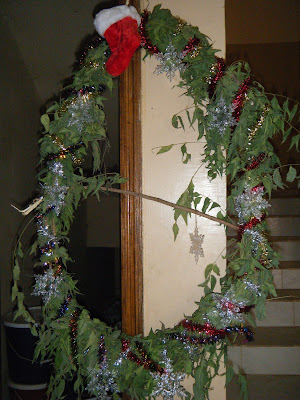
While everyone is planning holiday feasts and cooking up delicious family meals, I though I would share a recipe for a village delicacy I recently enjoyed. Feel free to put your own spin on it. Its called bush lizard, and after a year and a half of a diet consisting mostly of rice and peanuts, its a rare and welcome source of animal protein in my diet.
Step 1: Capture a lizard. Not just any lizard, a Faasa. A large, dinosaur-like monitor lizard that roams the fields and forests around the village. Bring a long-handled implement such as a shovel or a rake...these guys are notoriously fast and if you get too close they'll whip you with their tail. Once you've beaten it into submission immediately remove the head with your machete and let the blood drain out. Hold your faasa by the tail and beat it against a tree to expel all of the internal organs from the neck hole. Spectators should be aware that the first three rows are considered a "splash zone" and should occupy them in the understanding that they will be covered in small pieces of blood and intestine.
 Step 2:
Step 2: Once your faasa is good and disemboweled, leave it outside on a firm cement surface in direct sunlight for several hours. This serves to begin the tenderizing process, which will continue until the following day. Once the sun begins to set, scrape off the top-most layer of scales from the skin and wash the carcass in soapy water. Be sure to reach inside and remove any remaining entrails. Then soak the carcass in a mixture of salt and hot pepper powder over night, to flavor the meat. In the morning go out to the forest and collect an armload of sticks, then start a pot of water boiling over a fire. Once the water is scalding hot, submerge your faasa and let it boil for two to three hours.
 Step 3:
Step 3: Remove your faasa from the water and heat a small amount of oil in a different pot. While the oil is heating, take the time to cut the carcass into manageable chunks. First remove the legs, and then section the tail and torso. When the oil has reached frying temperature, rub the pieces of faasa in more hot pepper and drop them in the oil. Fry until crispy.
Step 4: Enjoy.
Step 5: Impale the severed head on your garden posts to ward off any other lizards who may be contemplating revenge.





